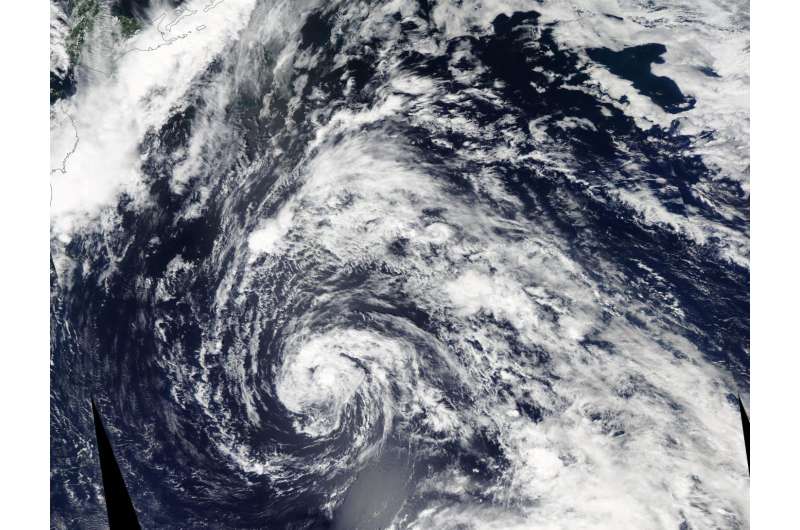NASA sees Tropical Storm 12W over the open Northwestern Pacific Ocean

Tropical Storm 12W formed over the open waters of the Northwestern Pacific Ocean, far southeast of the big island of Japan. NASA's Aqua satellite captured an image of the small storm on Aug. 18, 2016.
Tropical Storm 12W (12W) was spotted by the Moderate Resolution Imaging Spectroradiometer or MODIS instrument aboard NASA's Aqua satellite on Aug. 18. 12W appeared symmetrical. Animated enhanced infrared satellite imagery revealed a broad low-level circulation center with the bulk of the deep convection (and developing thunderstorms) persisting over the northern quadrant.
At 11 a.m. EDT (1500 UTC) on August 18, 2016 Tropical Storm 12W was centered near 31.1 degrees north latitude and 147.7 degrees east longitude, about 522 nautical miles east-southeast of Yokosuka, Japan. 12W has tracked northwestward at 16.1 mph (14 knots/25.9 kph) and is expected to continue moving in that direction. Maximum sustained winds were near 46.0 mph (40 knots/74.0 kph).
The Joint Typhoon Warning Center forecast calls for Tropical Storm 12W to move in a generally westerly direction over the next several days and intensify into a typhoon by Aug. 23 as it nears the southern islands of Japan.
Provided by NASA/Goddard Space Flight Center





















